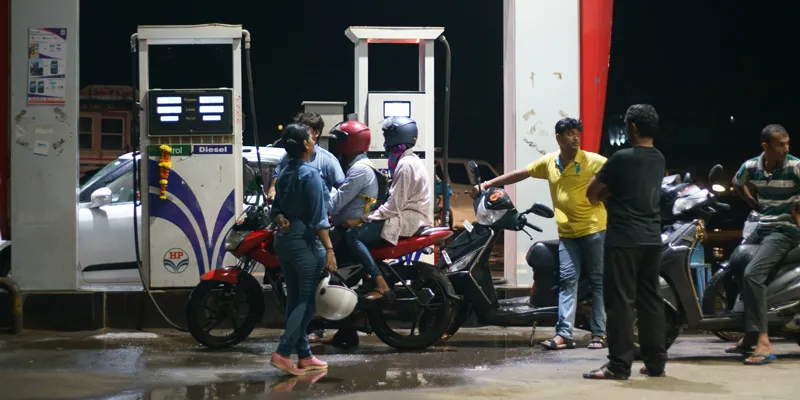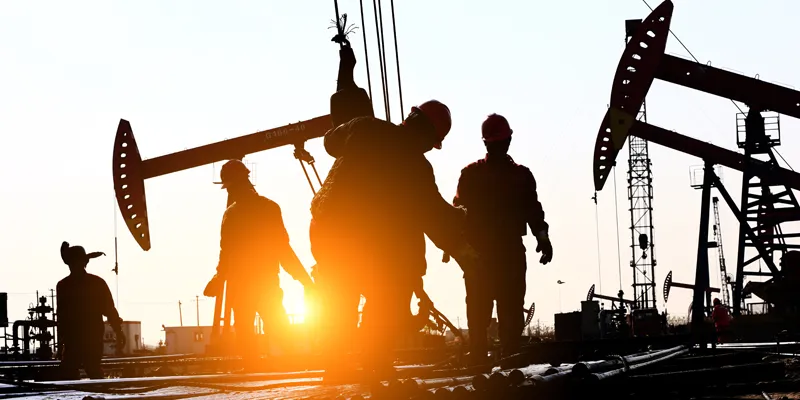The strange saga of negative crude oil price and how it will affect you
Crude prices slipped into negative yesterday. What does this really mean? Is it likely that if you drove into the nearest petrol pump for a refill, you would be paid to refill?
Crude prices slipped into negative yesterday. The price touched negative $37 per barrel. What does this really mean? Is it likely that if you drove into the nearest petrol pump for a refill, you would be paid to refill?
It is not as difficult to comprehend as it may appear at first sight.

Will petrol be cheaper? (Image: Shutterstock)
The price of any commodity or product is determined by the good old ‘supply’ and ‘demand’ dynamics. If the demand for a commodity drops, the price drops too. In the short term, the demand curve slides down the supply curve and the price slides down too.
In other words, the producers begin throttling the supply and this pushes down the price. The assumption, of course, is that the signal of a drop in ‘demand’ is somehow communicated to the ‘supply’ side seamlessly.
This seems pretty easy to do. Drop in demand just means that fewer people are lining up at the producers doorstep to buy their product or commodity. Therefore, as soon as the queue of buyers outside gets shorter, you, as a supplier, need to reduce your production of the commodity or product.
The crude truth
Seems straightforward. So, why does a commodity trade at a negative price!
Because trading in commodities is not as simple as that.
Commodities like crude oil are rarely bought and sold directly between buyers and sellers. There are intermediaries in the form of traders. Here is how the trade works in a very simplified form.
Let’s assume that you are a refinery and you need a regular supply of crude oil. Further, you want it at a predetermined price rather than having to buy every month at the prevailing market price.
You could enter into a futures contract with an oil producer where the producer agrees to deliver say a million barrels of crude per month to you in the months of May to September at $30 a barrel.
Now as the month of May approached, you can hold the contract and receive the million barrels of crude in May. If for some reason you don’t need the oil, you can sell the contract to someone else who needs a million barrels of crude in May. Meanwhile, if the spot price of crude oil has moved up to say $40 a barrel, you can make a cool profit of $10 a barrel, and for a contract of a million barrels, you can make a profit of $10 million.
Now, this contract can keep changing hands by being bought and sold multiple times. No one has to take delivery of the million barrels of crude except the end user who finally buys the contract and takes the delivery in May.
Now, assume that instead of the price going up to $40 a barrel, it drops to $20, then the one holding this contract makes a loss of $10 million instead of the profit of $10 million if the price had gone up to $40.
Take an extreme example. What if you are a trader holding the contract and no end user is willing to buy the contract because the demand for oil has evaporated. It could have evaporated for any reason and coronavirus could be the cause this time.

Workers at an oil refinery. (Image: Shutterstock)
Come May, and you are forced to take delivery of the million barrels of crude! But you are just a trader sitting in the air-conditioned office of a trading firm in New York or Hong Kong or Dubai. Where will you store the million barrels of crude? You have to pay someone to store it for you until you find an end user. Or you need to sell the contract at a negative price to someone who will take delivery of the crude and store it until the demand picks up.
The price for paying someone to take this load off you before the delivery date in May is $37. In other words, you are paying someone $37 so that they can take a barrel of crude and store it for you in giant tankers on the high seas. In other words, the sale price of crude is a negative $37.
All about demand and supply
Is there a dichotomy or a flaw in this? No, there is neither a dichotomy nor real flaw. This is how any trade works. If every trade was between a seller and an end user, this situation would not have arisen. But international trade has become more complex, and intermediaries in the form of traders have emerged.
These traders help in smoothening the kinks and improving efficiency. But like in any intermediation, speculators also enter the scene and try to make a quick buck. Speculation is the other side of the coin. You can’t have trade without speculation.
‘Price’ is the signal for communicating variations in the ‘demand’ side to the ‘supply’ side or vice-versa. And in a trading context for commodities, a negative price, though it has happened for the first time in history is neither shocking nor is it something to be worried about.
It just indicates that the transmission of signal from the demand side to the supply side has not been efficient, thus creating huge inventories which reflect as a negative price!
The producers have slowly started shutting their pumping stations and the supply is adjusting. Would it have been better if the adjustment had taken place without the crude price having to slip into negative, the answer is yes, of course.
And will you be paid to fill up your tank at the petrol pump? Forget it! That will never happen! This transaction is directly between an end-user and a seller. And unfortunately, you as the consumer get to make no profit from this.
Edited by Dipti D







